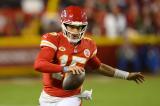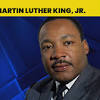The NFL’s 6 new rules for the 2021 season, explained


Each year team owners meet with the NFL Competition Committee to discuss ways to improve or alter the game of football. Sometimes these are minor tweaks to the game, while on other occasions they have a profound effect on the league as a whole. Past elements like like helmet-to-helmet hits, player celebrations, and moving the placement of the kickoff have changed the NFL as we know it.
This year 12 rules were proposed by either the Competition Committee or an individual team, with a final list of six new or modified rules being settled on through owner vote. So what are they, how did they change, and what does it mean for the league?
Rule No. 1: “By Competition Committee; to amend Rule 16, to eliminate overtime in the preseason.”What does this mean? Simply put, there will be no overtime period in preseason games moving forward.
How did this change? Rule 16 simply laid out how preseason games would be conducted, which mirrored regular season matchups.
How will it impact the NFL? I don’t think anyone was invested enough in preseason results to care who actually won or lost games enough to care about overtime. Sure, it could mean we see more official games end in ties. This rarely happens as is — but without anything on the line in terms of playoff positioning, this is more a play for media partners to have more regular programming, and for everyone to put an end to meaningless games sooner.
Rule No. 2: “By Competition Committee; to amend Rule 6, Section 1, Article 3, for one year only, to establish a maximum number of players in the setup zone.”What does this mean? Okay, this one is a lot more complex. The setup zone is the area 10-25 yards from the spot of a kickoff, specifically by the return team. Now the return team can have no more than nine players inside the setup zone when an onside kick is attempted. This rule is directly designed to increase the chance a kicking team has of recovering the ball.
How did this change? Previously there were no setup zone limits. Statistically a majority of teams played with 10 players in the setup zone on onside kick returns, while some used 11 players. In a simple numbers game this means the kicking team will have a better chance of recovering an onside kick.
How will it impact the NFL? There have been numerous proposals for how to make end of game comebacks more exciting, including a radical proposal to allow teams a “4th and 15” attempt, rather than attempt an onside kick. That extra down proposal was shot down, with the league favoring a more conservative approach. This could well mean we see more onside kicks recovered, but there could be concern teams begin to use more onside kicks as a weapon — specifically if they have a talented hands team. It’s for this reason the league is giving the setup zone restrictions a one year trial before making it a complete rule.
Rule No. 3: “By Competition Committee, Coaches Subcommittee, and Baltimore; to amend Rule 15, Section 3, Article 9, and Rule 19, Section 2, to permit the Replay Official and designated members of the Officiating department to provide certain objective information to the on-field officials.”What does this mean? An expansion of the duties of the replay official, the new rule allows the replay official to use technology to give information to on-field officials during replay. This means that watching replay is effectively a two-official job now, with the duo working together to decide the play. In the case they can’t agree the final judgement still comes down to the on-field official, as in the past, but the additional input from the replay official can influence the decision making.
How did this change? In the past on-field officials were allowed to request specific angles, video speed, and other technologies to make a decision — but outside of that the replay official had little say in the proceedings. Now they are able to select and show specific objective information about plays, including evidence they feel clearly shows if a catch is make, a player is in bounds, or any number of other potential elements of a play.
How will it impact the NFL? This should, hopefully, increase the accuracy of calls in coach challenges and other critical moments of the game. Having a second official working on a replay should mean we get more correct results.
Rule No. 4: “By Chicago; to amend Rule 11, Section 3, Article 3, to ensure the enforcement of all accepted penalties committed by either team during successive Try attempts.”What does this mean? Hoo boy. Okay, this is an extremely edge case situation — but nonetheless, the Bears wanted it ironed out. Essentially this rule means that if both teams commit penalties on PAT or Two Point Conversion attempts that the second penalty can’t alter the spot of the ball for the following attempt. I know this is ludicrously confusing, but bear with me.
How did this change? So this dates back to a 2019 game between the Bears and Broncos that ended in drama when the Broncos got a late-game two point conversion from an incorrect spot. The moment was officiated correctly, but it was awkward.
Essentially here’s what happened: The game was 13-12 in favor of the Bears. The Broncos lined up for a two point conversion, and were penalized for delay of game — pushing them to the seven yard line. Then, they decided to move to the kick instead, so they could tie. The Bears jumped offsides, and as the rule stood it was counted from the two yard line, not the seven. The result was the Broncos moved to a two point conversion from the one yard line, as if their delay of game never counted.
How will it impact the NFL? Probably not at all. This is an exceedingly weird circumstance that rarely ever comes up, but at least it’s covered now.
Rule No. 5: “By Los Angeles Rams; to amend Rule 8, Section 1, Article 2, to add a loss of down for a second forward pass from behind the line and for a pass thrown after the ball returns behind the line.”What does this mean? The penalty is now loss of down and five yards on failed trick plays that result in two forward passes, or instances where a quarterback runs past the line of scrimmage, only to return and throw downfield.
How did this change? Bizarrely, previously the penalty was only a five yard loss. This made the penalty for a second forward pass more lenient than a single forward pass past the line of scrimmage. Now both infractions have the same consequence.
How will it impact the NFL? This is really a no-nonsense move. Truly, I’m a little mystified how nobody looked at the rules over all these years and didn’t notice the wildly different penalties for essentially the same infraction. I’m not aware of anyone leveraging this inconsistency to their advantage, but it’s been ironed out.
Rule No. 6: “By Kansas City; to amend Rule 5, Section 1, Article 2, to expand jersey number options for certain positions.”What does this mean? You’ve probably noticed this one the most already, especially if you’ve been jersey shopping recently. This changed the positional numbering of players to allow offensive skill position players, linebackers and defensive backs to wear numbers 1-49.
How did this change? In past years only quarterbacks, kickers, and punters were allowed to wear single-digit jersey numbers. Now that has been expanded to a majority of positions.
How will it impact the NFL? There’s been some questions whether this will make life more difficult for officials to identify eligible receivers, but that’s an iffy concern. Linemen are still relegated to wearing 50-79 and 90-99 on the jerseys, and making a lineman eligible is far more prevalent than an additional skill position player. This should have little impact other than players getting to have more choice, and it putting a hurt on your wallet as you re-buy jerseys.
2021 Point of Emphasis: TauntingThis is not a rule change per se, but rather an existing rule the NFL wants officials to crack down on more. Essentially this point of emphasis states that a player will be ejected for two taunting penalties in a game, with the possibility of further suspension.
If you want to read more in depth on this topic we’ve got you covered.
2021 NFL Covid RulesThe rules for dealing with Covid 19 have changed drastically from a year ago. In 2020, before vaccination was widely available, the league focus was on social distancing and preventing possible outside infection. Players were subject to regular testing, with positive individuals isolated.
Now, with the ease-of-access to vaccination the league is putting the onus on players to be responsible for themselves and others. The mandate includes harsh changes for players who don’t want to be vaccinated, as well as potentially forfeit games for teams that have positive players on their rosters.
You can read more in depth on the NFL’s 2021 Covid policy here [will write explainer]


 United States
United States Argentina
Argentina  Australia
Australia  Austria
Austria  Brazil
Brazil  Canada
Canada  Chile
Chile  Czechia
Czechia  France
France  Germany
Germany  Greece
Greece  Italy
Italy  Mexico
Mexico  New Zealand
New Zealand  Nigeria
Nigeria  Norway
Norway  Poland
Poland  Portugal
Portugal  Sweden
Sweden  Switzerland
Switzerland  United Kingdom
United Kingdom 






















